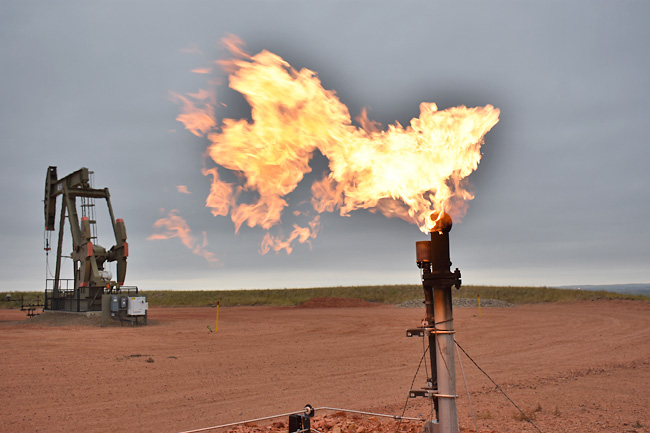WASHINGTON (AP) – Oil and natural gas companies for the first time will have to pay a federal fee if they emit dangerous methane above certain levels under a rule being made final by the Biden administration.
The Environmental Protection Agency (EPA) rule follows through on a directive from Congress included in the 2022 climate law. The new fee is intended to encourage industry to adopt best practices that reduce emissions of methane – the primary component of natural gas – and thereby avoid paying.
Methane is a climate ‘super pollutant’ that is far more potent in the short term than carbon dioxide and is responsible for about one-third of greenhouse gas emissions. The oil and natural gas sector is the largest industrial source of methane emissions in the United States (US), and advocates said reduction of methane emissions is a crucial way to slow climate change.
The rule comes hours after President-elect Donald Trump named former New York congressman Lee Zeldin to head the agency in Trump’s second term. If confirmed by the Senate, Zeldin is expected to move to reverse or loosen dozens of environmental regulations approved under President Joe Biden as Trump seeks to establish US ‘energy dominance’ worldwide.
Trump is likely to target the methane fee amid a flurry of expected actions he has promised to deregulate the oil and gas industry.
As outlined by the EPA, excess methane produced in 2024 could result in a fee of USD900 per tonne, with fees rising to USD1,200 per tonne in 2025 and USD1,500 per tonne by 2026. Industry groups are likely to challenge the rule, including any effort to impose a retroactive fee.
The rule will not become final until early next year, following publication in the Federal Register.
EPA Administrator Michael Regan said in a statement that the rule will work in tandem with a new EPA rule on methane emissions imposed this year. The rule targets the US oil and natural gas industry for its role in global warming as Biden seeks to secure his legacy on fighting climate change.
The fee, formally known as the Waste Emissions Charge, will encourage early deployment of available technologies to reduce methane emissions and other harmful air pollutants, Regan said. The fee “is the latest in a series of actions under President Biden’s methane strategy to improve efficiency in the oil and gas sector, support American jobs, protect clean air and reinforce US leadership on the global stage”, he said.
Industry groups and Republican-led states have challenged the earlier methane rule in court, but lost a bid for the Supreme Court to block the rule while the case continues before lower-level judges.
Opponents argue that EPA overstepped its authority and set unattainable standards with the new regulations. The EPA, though, said the rules are squarely within its legal responsibilities and would protect the public.
Many large oil and gas companies already meet or exceed methane-performance levels set by Congress under the climate law, meaning they are unlikely to be forced to pay the new fee, Regan and other officials said.
Even so, EPA estimates that the rule will result in cumulative emissions reductions of 1.2 million metric tonnes of methane (34 million metric tonnes of carbon-dioxide equivalent) through 2035. That figure is similar to clean-air gains from taking nearly eight million gas-powered cars off the road for a year, the EPA said.





